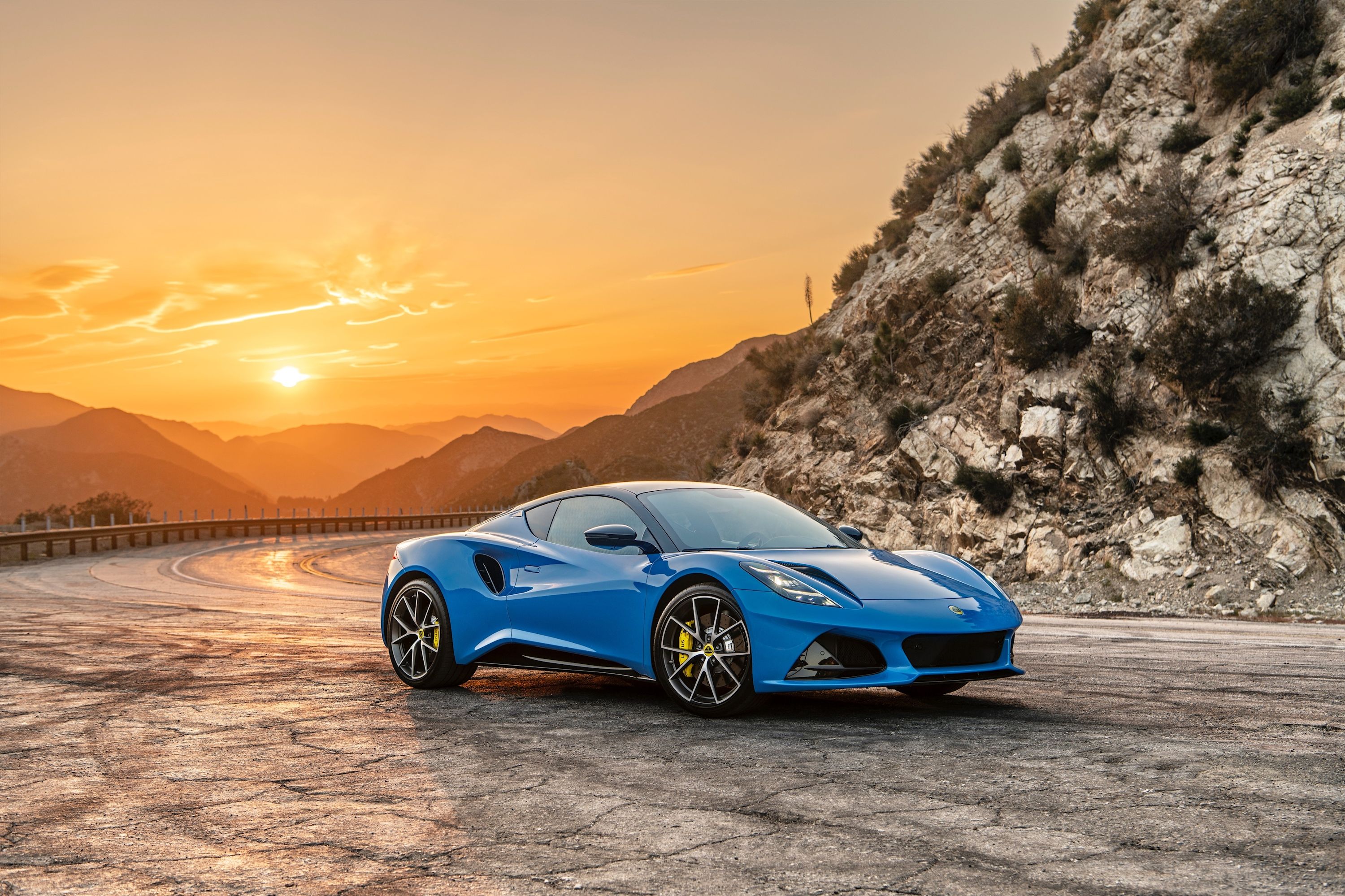
Lotus revealed its first new regular car in more than a decade this week (we're not considering the 2,000-hp electric Evija a regular car). It's called the Lotus Emira and despite its curb weight being a little more than we'd like at 3,079 pounds, it's still a gorgeous little junior supercar. During the live presentation from Lotus HQ in Hethel, design director Russell Carr walked us through the curving and scalloped sheetmetal.
"The ambition for the design team from the outset was to create a car that had the visual drama of a supercar, but package it up in a vehicle that is affordable, compact, high-quality and most importantly everyday useful," said Carr. "When we say 'supercar' there are really three elements. First, the obvious reference to the Evija hypercar. That was always intended to be a statement, a new design language, so why wouldn't we use it on our new car? Second, combining beautiful soft sculpture with technical details that bounds between form and function. Finally, the proportion, getting the car low and hunkered down, something that invites you to drive it."
And we can see that the team succeeded. The Emira does look like a mini Evija, and that's good, because that electric hypercar is awesome. We can see the scallops in the doors like the EV, as well as the rear vents, which aren't as pronounced. Also in the hood, where air extractors flank the LED headlights on both cars.
"At the front of the car we have this sharp, attacking nose section that looks like it's going to cleave through the air, and that's really important," said Carr. "We want the car to express speed standing still. Also on the front, the very distinctive headlights, which give the car a unique signature when it's looming up behind you at night."
We'd say Lotus succeeded again here. You can imagine the air flowing over the hood, extracting heat from the engine bay. And the headlights will look like nothing else on the road, though they're not as wild as the new Peugeot, which we also like. That's a big differentiator for automakers. Volvo, Cadillac, Kia and Hyundai all have new light signatures that telegraph which car is bearing down on you.
"You'll notice that the lines flow very beautifully in three-quarter view from the bonnet into the side structure. And the way we play with light and shadow on there helps us describe a car that is very athletic, the car looks planted to the road, a car that is going to be exciting to drive," said Carr.
"Aerodynamics is that tangible, direct link; it's the science behind the beauty of the car. Every feature on the car, every shape on the car's bodywork has a part to play in the way the air flows around it, the way it guides the airflow into certain positions," said chief aerodynamicist Richard Hill. "The splitter captures the air at the front to generate downforce to counteract lift, you have the airblades in the bonnet, they create vortices to drag the air out and direct it down."
Even the vents on the C-pillar are positioned to grab those vortices and pull them rearward. In the back the c-shaped lights are designed to widen the look of the vehicle.
"Everyone knows the car has to beautiful, but it also has to work," said Carr.
So far so good, but we'll be the judge of that second part.
